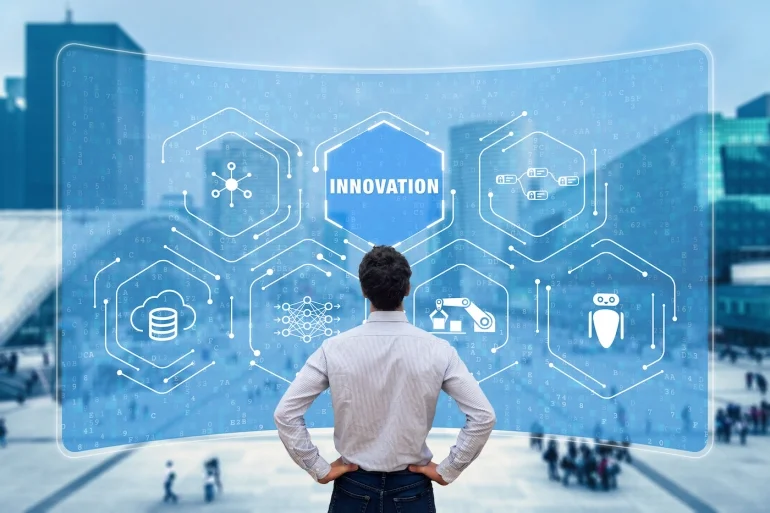
Written By Esther Shein, July 19, 2023
The research firm outlines when the average organization should expect a technology to deliver the benefits necessary to justify continued investment.

In an expansive Forrester report on the top 10 emerging technologies of 2023, it comes as no surprise that generative AI tops the list, followed by autonomous workplace assistants and conversational AI.
These three technologies “… are poised to deliver a return on investment soon,” which Forrester defines as less than two years. “Generative AI and conversational AI (which replace NLP) and autonomous workplace assistants (which replace intelligent agents) now promise short-term results,” the report stated.
Jump to:
- 1. Generative AI
- 2. Autonomous workplace assistants
- 3. Conversational AI
- Other emerging tech in the top 10
- Steps leaders should take regarding this emerging tech
1. Generative AI
Forrester defines generative AI as a set of technologies and techniques that leverage massive amounts of data to generate new content such as text, video, images, audio and code in response to natural language prompts or other noncode and nontraditional inputs.
Benefits of using generative AI include improved digital experiences via natural language interactions, rapid knowledge retrieval, faster content generation and improved content quality, according to the report.
Yet, there are risks to be aware of as well. Generative AI is prone to “… coherent nonsense, security threats, and harmful generation,” and “… firms aren’t able to quickly vet the rapidly increasing quantity of new capabilities,” the report said.
SEE: TechRepublic’s ChatGPT cheat sheet
“It will take several years to resolve governance, trust, and IP issues in customer-facing or safety-related uses,” the report warns, although generative AI will reap benefits in less than two years.
2. Autonomous workplace assistants
Forrester defines autonomous workplace assistants as “… software that can make decisions, act without approval, and perform a service based on environment, context, user input, and learning in support of workplace goals.”
Forrester Vice President of Emerging Technologies Brian Hopkins explained that, compared to intelligent agents, with AWAs, “… we’re seeing [a] blending of RPA (robotic process automation) and digital process tools” and the ability “… to create a software agent that is capable of learning as it goes and answering more complex queries and acting in a non-deterministic way.”
SEE: TechRepublic Premium’s automation specialist hiring kit
Benefits of AWAs include reduced cost of answering questions, reduced process inefficiency and improved customer service, the report said. The risks, which will challenge enterprise skill levels, include the need to integrate key automation building blocks such as RPA, conversation and decision management.
Hopkins is clear that this year we’ve hit an inflection point, and chatbots and AWAs will “explode.”
3. Conversational AI
Conversational AI tools aren’t new, though they haven’t worked well in the past, according to the report. The technology placed third on the list because a combination of advancements and a reduction in licensing costs “… make this technology capable of delivering ROI in the near term, while there is still a lot of room for future advancements and innovations,” the report noted.
Benefits of conversational AI include increased sales, automated customer service, employee self-service and frictionless buying experiences. The risks include poorly designed chatbots providing poor customer experience and eroding trust, as well as inflexible platforms that cannot evolve quickly to keep up with the pace of innovation.
SEE: TechRepublic’s Google Bard cheat sheet
Other emerging tech in the top 10
Rounding out the list of Forrester’s top emerging tech are:
4. Decentralized digital identity is a solution and identity network that provides decentralized, distributed, verifiable and revocable credentials and claims based on trust between issuers, verifiers and users. Forrester predicts it will deliver significant benefits in two to five years.
5. Edge intelligence includes streaming analytics, edge machine learning, federated machine learning and real-time data management on intelligent devices and edge servers. Forrester predicts it will deliver significant benefits in two to five years.
6. Explainable AI are techniques and software capabilities for ensuring that people understand how AI systems arrive at their outputs. Forrester predicts it will deliver significant benefits in two to five years.
7. TuringBot is AI-powered software that augments the intelligence and ability of developers and their teams to design, build, change, test and refactor software code and applications in automatic and autonomous ways. Forrester predicts it will deliver significant benefits in two to five years.
8. Extended reality is a technology that overlays computer imagery on a user’s field of vision, with augmented reality, mixed reality and virtual reality technologies that are supported by the same developer tools, sensors and cameras, and simulation engines. Forrester predicts it will be five years or more until extended reality delivers its expected value.
9. Web3 is a concept that promises a World Wide Web that isn’t dominated by big tech or other established firms like banks. Forrester predicts it will be five years or more until Web3 delivers its expected value.
10. Zero-trust edge is a solution that securely connects and transports digital information using zero-trust access principles in and out of remote sites using mostly cloud-based security and networking services. Forrester predicts it will be five years or more until zero-trust edge delivers its expected value.
Steps leaders should take regarding this emerging tech
For organizations that are just starting to look at these emerging technologies, Hopkins advised they develop a framework for rapidly experimenting so they can understand what it can do for their business and to weigh the risks versus the rewards.
Forrester advises tech executives “… with modern tech management strategies …” to “pilot” generative AI, AWAs and conversational AI and then commercialize them.
“Mainstream firms should begin to invest or continue investing in them with reasonable expectations for measurable benefits quickly,” the report said.
Even though extended reality, Web3, and zero-trust edge will take at least five more years to live up to their potential, the report advises organizations to “Put them on your watchlist, but you need to set expectations with more enthusiastic advocates in your business.”
Zero-trust edge combines zero-trust security with different kinds of networks depending on what applications are running, Hopkins said.
“Networking has always been separate from security, so we’re seeing the emergence of security vendors buying networking vendors and embedding security into networking capabilities, or vice versa,” he explained.
This is why it will take a number of years for zero-trust tools to be available for enterprises to buy and implement.
“We’re a little skeptical about Web3. It’s not sure what it’s going to be when it grows up,” Hopkins added.
He also noted that emerging technologies have a tendency to change, pointing out that last year everyone was hyperfocused on the metaverse and, this year, that focus is on generative AI.
“You’ve got to think next year, it might be something else,” Hopkins said. “We’re right in the middle of what Forrester has called, over many years, the acceleration, the framework for being future fit; being able to deal with the pace of change. The more prepared you are for that, the better off you’re going to be in the future.”

Leave a Reply